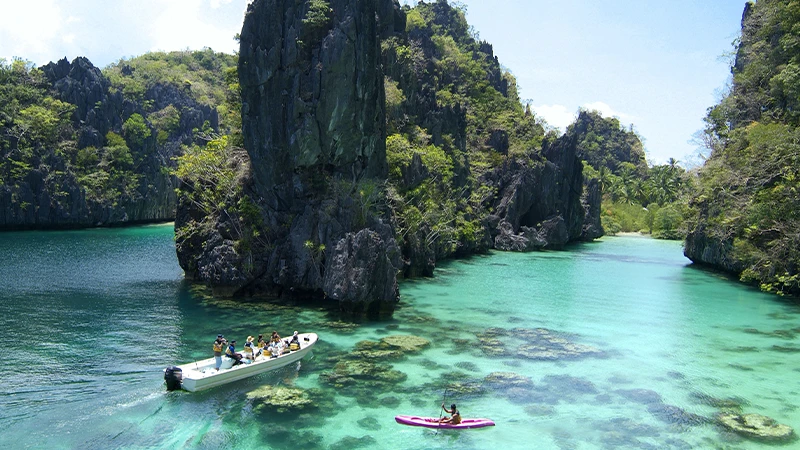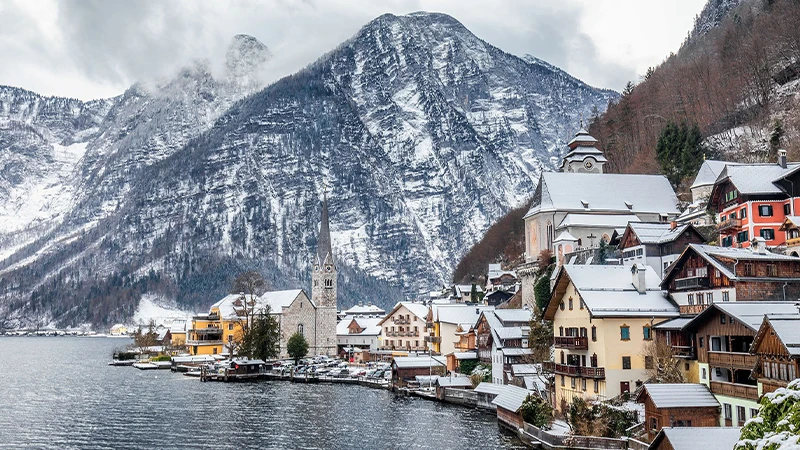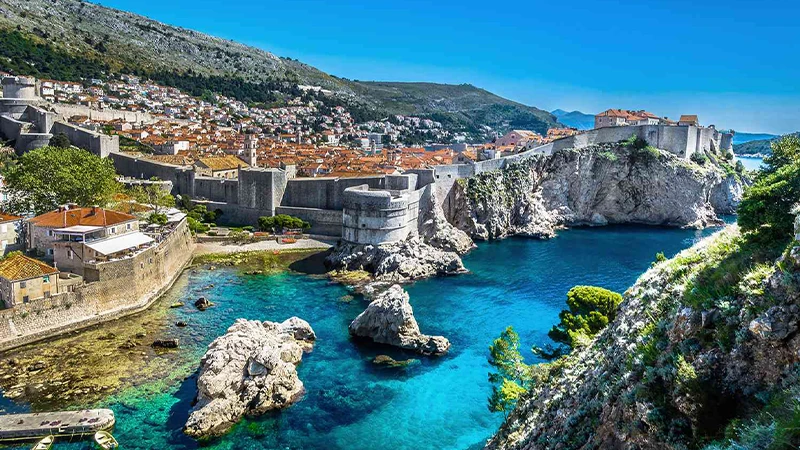East Asia is home to some of the most stunning and diverse islands in the world, offering a blend of pristine natural beauty, rich cultural history, and incredible wildlife. From tropical paradises to rugged mountain landscapes, the islands of East Asia attract travelers seeking adventure, relaxation, and unforgettable experiences. Whether you’re planning a beach getaway, a wildlife safari, or an exploration of ancient traditions, the islands of East Asia offer something for everyone.
In this guide, we’ll explore some of the most beautiful islands in East Asia, each offering its own unique charm, natural wonders, and cultural significance.
1. Jeju Island, South Korea
Located off the southern coast of South Korea, Jeju Island is often referred to as the “Hawaii of Korea” due to its mild climate, stunning landscapes, and volcanic origins. This UNESCO World Heritage-listed island is one of the most popular vacation destinations in South Korea, offering a wide variety of activities for nature lovers, adventurers, and those seeking relaxation.
What Makes It Special:
- Natural Wonders: Jeju is known for its volcanic landscapes, including the towering Hallasan Mountain, which is the highest peak in South Korea. The island is also home to the impressive Manjanggul Lava Tube, one of the longest lava tubes in the world, and the Jeju Stone Park, which showcases the island’s volcanic rock formations.
- Beaches: With its crystal-clear waters and sandy shores, Jeju Island boasts some of the most beautiful beaches in East Asia. Hyeopjae Beach is famous for its white sand and turquoise waters, while Jungmun Beach is a popular spot for water sports.
- Unique Culture: Jeju has a rich cultural heritage, including the unique Haenyeo (female divers) tradition, where women dive for seafood without the aid of breathing equipment. This practice has been recognized as an intangible cultural heritage by UNESCO.
- Wildlife: Jeju is home to diverse flora and fauna, including rare species of birds and plants. The island is also a popular destination for whale watching, especially during the winter months when humpback whales migrate through the region.
Why It’s Special:
Jeju Island offers an unbeatable combination of natural beauty, cultural experiences, and outdoor activities. Whether you’re hiking up Hallasan Mountain, relaxing on a beach, or exploring the island’s volcanic landscapes, Jeju is an ideal destination for nature enthusiasts and travelers looking to escape to a peaceful paradise.
2. Palawan, Philippines
Palawan, located in the western Philippines, is often hailed as one of the most beautiful islands in the world. Known for its dramatic limestone cliffs, pristine beaches, and crystal-clear waters, Palawan is a haven for nature lovers, divers, and beachgoers. The island is home to two UNESCO World Heritage Sites, the Tubbataha Reefs Natural Park and the Puerto Princesa Underground River, making it a must-visit destination for any traveler in East Asia.
What Makes It Special:
- Breathtaking Landscapes: Palawan is renowned for its spectacular landscapes, including the dramatic limestone formations found in El Nido and Coron. These stunning islands and lagoons offer breathtaking views and opportunities for boat tours and exploration.
- Underwater Wonders: Palawan is a top destination for diving and snorkeling, with rich marine biodiversity and pristine coral reefs. Tubbataha Reefs is one of the best dive sites in the world, home to diverse marine life, including turtles, sharks, and colorful coral.
- Puerto Princesa Underground River: A UNESCO World Heritage Site, this underground river system is one of the longest navigable rivers in the world. Visitors can take a boat ride through the caves, exploring the stunning stalactites and stalagmites that line the riverbanks.
- Wildlife: Palawan is a biodiversity hotspot, home to rare species like the Philippine tarsier, Palawan bearcat, and green sea turtles. The island’s remote nature also makes it a sanctuary for various endangered species.
Why It’s Special:
Palawan is an unspoiled paradise, offering both adventure and tranquility in its lush jungles, pristine beaches, and crystal-clear waters. It’s the perfect destination for those who want to explore untouched natural beauty, whether you’re hiking through forests, diving into vibrant coral reefs, or simply soaking in the stunning views.
3. Taiwan’s Orchid Island (Lanyu), Taiwan
Orchid Island, known as Lanyu in Taiwanese, is a small, remote island located off the southeastern coast of Taiwan. The island is famous for its untouched natural beauty, vibrant culture, and the unique indigenous Tao people who call it home. Orchid Island remains one of Taiwan’s best-kept secrets, offering a tranquil escape from the bustle of urban life.
What Makes It Special:
- Rich Culture: The island is primarily inhabited by the Tao people, an indigenous group with a rich cultural heritage. Visitors can learn about traditional Tao customs, including their famous boat-building techniques and unique way of life.
- Lush Nature: Orchid Island is known for its lush greenery, dramatic cliffs, and crystal-clear waters. The island is a paradise for outdoor enthusiasts, with opportunities for hiking, snorkeling, and diving.
- Beaches and Water Activities: Lanyu’s beaches are relatively undeveloped, providing a peaceful and natural setting for relaxation. Shitiping, a famous spot on the island, offers incredible snorkeling opportunities with clear waters teeming with marine life.
- Unique Flora and Fauna: The island is home to rare species of plants and animals, including the Lanyu scops owl, a bird endemic to the island. The surrounding waters are also rich in marine life, making it a popular destination for diving.
Why It’s Special:
Orchid Island is an excellent destination for travelers seeking a quieter, more authentic experience. The combination of cultural heritage, natural beauty, and pristine beaches makes it a hidden gem in East Asia, perfect for those looking to immerse themselves in both nature and indigenous traditions.
4. Koh Samui, Thailand
While Thailand is often known for its bustling cities and cultural heritage, the country’s islands are just as spectacular, and Koh Samui is one of the most famous. This tropical paradise is known for its palm-fringed beaches, crystal-clear waters, and vibrant nightlife. With its wide range of activities, luxurious resorts, and laid-back vibe, Koh Samui is a popular destination for travelers from around the world.
What Makes It Special:
- Gorgeous Beaches: Koh Samui is home to some of Thailand’s most beautiful beaches, including Chaweng Beach, Lamai Beach, and Maenam Beach, each offering soft sand, clear waters, and a range of activities from water sports to beach relaxation.
- Spiritual Attractions: The island is also home to several spiritual landmarks, including the famous Big Buddha Temple, which features a massive golden Buddha statue. Visitors can explore the island’s Buddhist temples and immerse themselves in the local culture.
- Nature and Waterfalls: Koh Samui’s lush interior is dotted with waterfalls, including the popular Hin Lad Waterfall and Na Muang Waterfall, both of which are surrounded by tropical jungle and offer opportunities for hiking and swimming.
- Wildlife: Koh Samui offers opportunities to encounter local wildlife, from monkeys and macaques to tropical birds. The island also has Samui Aquarium, where visitors can see a variety of marine life, including sea turtles and stingrays.
Why It’s Special:
Koh Samui offers a perfect mix of relaxation, adventure, and cultural exploration. Whether you’re lounging on the beach, exploring waterfalls, or diving into the island’s spiritual heritage, Koh Samui is an island that provides something for every kind of traveler.
5. Ishigaki Island, Japan
Ishigaki Island is part of the Yaeyama Islands, located in the southernmost part of Japan’s Okinawa Prefecture. Known for its tropical climate, pristine beaches, and diverse marine life, Ishigaki Island is a haven for nature lovers, beach enthusiasts, and divers. It offers a tranquil escape from Japan’s major cities while still providing access to unique cultural experiences.
What Makes It Special:
- Stunning Beaches: Ishigaki boasts some of Japan’s most beautiful beaches, including Yonehara Beach, known for its white sand and clear waters. The island’s beaches are perfect for swimming, kayaking, and snorkeling.
- Diving and Snorkeling: Ishigaki Island is famous for its vibrant coral reefs and marine life, making it one of the best dive spots in Japan. You can swim with manta rays, sea turtles, and other exotic marine creatures in the crystal-clear waters surrounding the island.
- Rich Biodiversity: Ishigaki is home to unique plant and animal species, including rare butterflies and Okinawan wildlife. Visitors can explore the island’s natural beauty through hiking, birdwatching, and forest walks.
- Cultural Sites: The island also has a rich cultural heritage, with Ishigaki Yaima Village showcasing the traditional life of the Ryukyu Islands. You can also visit ancient ruins, like the Tamatorizaki Observatory, to enjoy panoramic views of the island.
Why It’s Special:
Ishigaki Island offers a perfect blend of natural beauty, outdoor adventure, and cultural exploration. Whether you’re hiking through tropical forests, diving in crystal-clear waters, or relaxing on the beach, Ishigaki promises an unforgettable experience in both nature and tradition. The island’s laid-back atmosphere, combined with its vibrant coral reefs, lush landscapes, and welcoming local culture, makes it an ideal destination for those looking to escape into an island paradise while still immersing themselves in Japan’s rich heritage. From scenic viewpoints to traditional Okinawan festivals, Ishigaki Island offers a truly unique and diverse experience that will captivate every kind of traveler.
6. Fujian’s Gulangyu Island, China
Nestled just off the coast of Xiamen in China’s Fujian Province, Gulangyu Island is a small, picturesque island known for its beautiful beaches, historic architecture, and vibrant cultural heritage. Unlike many bustling tourist destinations, Gulangyu retains a peaceful, timeless charm, making it a perfect escape from the city.
What Makes It Special:
- Historical Architecture: Gulangyu is known for its colonial architecture, a legacy from the days when the island was a foreign concession. The island is dotted with Victorian-style villas, churches, and mansions, giving it a distinct, European feel.
- Pedestrian-Only: One of the unique features of Gulangyu is that it is a pedestrian-only island. No vehicles are allowed, making it an idyllic and serene place to wander through narrow lanes lined with lush vegetation and traditional buildings.
- Piano Island: Gulangyu is often referred to as the “Island of Pianos,” due to its deep cultural connection to music. The island has more pianos per capita than any other place in China, and it is home to the Gulangyu Piano Museum, which showcases a remarkable collection of antique pianos.
- Beaches and Natural Beauty: Despite its small size, Gulangyu offers several scenic spots, including sandy beaches and lush parks. The Sunlight Rock, the highest point on the island, offers sweeping views of the surrounding area, including Xiamen’s skyline and the South China Sea.
Why It’s Special:
Gulangyu Island offers a peaceful escape with a fascinating mix of history, culture, and natural beauty. With its piano heritage, colonial architecture, and car-free streets, it’s an idyllic destination for anyone looking for a quiet retreat steeped in cultural charm.
7. Sado Island, Japan
Located in the Sea of Japan, Sado Island is a large island known for its rugged terrain, rich history, and vibrant cultural heritage. This remote island has long been a place of exile, but it has evolved into a unique destination for those interested in history, nature, and traditional Japanese arts.
What Makes It Special:
- Historical Significance: Sado Island has a fascinating history, especially during the Heian period when it was used as a place of exile for political figures. Visitors can explore the Sado Gold Mine, which was in operation from the 16th to 20th century and offers a glimpse into the island’s industrial past.
- Traditional Performing Arts: Sado Island is the birthplace of the famous Kodo Drummers, known for their powerful taiko performances. The island hosts various traditional festivals and performances, including the Sado Island Taiko Festival, where you can experience the rhythmic beats of the taiko drums.
- Natural Beauty: The island’s mountainous terrain offers stunning hiking trails, including the popular Mount Kinpō. Visitors can explore the island’s lush forests, coastal cliffs, and pristine beaches. Sado’s diverse ecosystem also provides opportunities for birdwatching, with migratory birds stopping at the island during the seasons.
- Rural Charm: Sado’s rural villages and landscapes offer a serene, almost untouched feel. The island has maintained a slow pace of life that is increasingly rare in modern Japan, making it a great spot for relaxation and reflection.
Why It’s Special:
Sado Island offers a deep dive into Japanese history, culture, and nature. With its beautiful natural landscapes, fascinating historical sites, and unique cultural experiences, it’s an excellent choice for those looking to explore the more traditional side of Japan.
8. Bali, Indonesia
Bali, the Island of the Gods, is one of the most popular travel destinations in Southeast Asia. Located in the heart of Indonesia’s archipelago, Bali is famous for its tropical beaches, lush jungles, vibrant arts scene, and spiritual culture. For centuries, Bali has attracted visitors from around the world, and today, it remains a paradise for travelers seeking adventure, relaxation, and cultural immersion.
What Makes It Special:
- Beaches and Surfing: Bali’s beaches are world-renowned, with spots like Kuta Beach and Uluwatu offering incredible waves for surfers. Visitors can also relax on quieter beaches like Nusa Dua or Sanur, where the water is calm and perfect for swimming.
- Vibrant Culture and Temples: Bali is home to a rich cultural heritage, with temples and shrines scattered throughout the island. Uluwatu Temple, perched on a dramatic cliffside, offers breathtaking views of the Indian Ocean, while Tanah Lot Temple is famous for its stunning sunset views.
- Rice Terraces and Nature: Bali’s iconic Tegallalang Rice Terraces are one of the island’s most photographed spots. Visitors can explore these lush green fields, which are part of Bali’s ancient agricultural traditions. The island is also home to beautiful hiking trails, waterfalls like Sekumpul Waterfall, and the towering Mount Agung, an active volcano.
- Yoga and Wellness: Bali has become a global wellness hub, particularly in areas like Ubud, where visitors can experience yoga retreats, meditation, and traditional Balinese healing practices. Bali’s tranquil environment, combined with its spiritual energy, makes it a perfect destination for rejuvenation.
Why It’s Special:
Bali is a complete package, offering everything from stunning natural landscapes and pristine beaches to a rich cultural experience. Whether you’re looking for a peaceful retreat, an adventure in the wild, or a chance to immerse yourself in local traditions, Bali is a destination that satisfies all kinds of travelers.
9. Komodo Island, Indonesia
Located within the Komodo National Park, Komodo Island is famous for being home to the legendary Komodo dragons, the world’s largest living lizard. This island, along with its neighboring islands, offers an incredible combination of wildlife, beaches, and rugged landscapes that make it one of the most exciting and unique destinations in East Asia.
What Makes It Special:
- Komodo Dragons: The island is most famous for its Komodo dragons, which can grow up to 10 feet in length and weigh over 300 pounds. Visiting Komodo Island is the only way to see these prehistoric creatures in the wild, and guided tours provide the chance to safely encounter them while learning about their habitat and behavior.
- Diving and Snorkeling: The waters surrounding Komodo Island are rich in marine life, making it a premier destination for divers and snorkelers. Pink Beach, one of the island’s most famous beaches, is known for its soft pink sand and vibrant underwater ecosystem.
- Hiking and Views: The island’s terrain is characterized by steep hills and ridges, providing excellent hiking opportunities with stunning views. From the summit of Padar Island, you can see panoramic vistas of the surrounding archipelago and the turquoise waters.
- Biodiversity: Komodo Island is part of the Coral Triangle, one of the richest marine areas in the world. In addition to Komodo dragons, the island is home to other wildlife, including wild boar, deer, and water buffalo, and the surrounding waters teem with fish, rays, and even sharks.
Why It’s Special:
Komodo Island is an unforgettable adventure for wildlife enthusiasts, divers, and hikers. The opportunity to see Komodo dragons in the wild is one of the main attractions, but the island also offers incredible natural beauty, unique landscapes, and a chance to experience one of the world’s most biodiverse ecosystems.
10. Matsu Islands, Taiwan
Located off the coast of Taiwan, the Matsu Islands are a group of small, isolated islands that remain largely untouched by mass tourism. Known for their historical significance and rugged beauty, the Matsu Islands offer a glimpse into Taiwan’s more remote and less-developed regions.
What Makes It Special:
- Historical Significance: The Matsu Islands have a rich history, particularly during the Chinese Civil War when they were the site of military conflict. The islands are dotted with military installations, including bunkers and fortresses, and offer a unique opportunity to explore Taiwan’s military history.
- Scenic Beauty: The Matsu Islands are known for their stunning coastal landscapes, including rugged cliffs, clear waters, and quiet beaches. Nangan Island, the largest of the Matsu Islands, offers picturesque views of the surrounding seas and islands.
- Traditional Culture: The Matsu Islands are home to a small but vibrant population that maintains traditional ways of life. Visitors can explore ancient temples, enjoy local seafood dishes, and experience the island’s slower pace of life.
- Birdwatching: The Matsu Islands are a popular spot for birdwatching, with the islands acting as a stopover for migratory birds. The islands’ natural habitats provide a sanctuary for a variety of bird species, making it a haven for birding enthusiasts.
Why It’s Special:
The Matsu Islands are perfect for travelers looking for an off-the-beaten-path destination that combines natural beauty with historical intrigue. The islands’ military past, scenic landscapes, and traditional culture make them an intriguing and peaceful escape.
Conclusion: Discover East Asia’s Hidden Island Gems
From the tranquil beauty of Gulangyu Island in China to the rugged adventure of Komodo Island in Indonesia, East Asia is home to some of the most spectacular and diverse islands in the world. Whether you’re looking to explore unique wildlife, immerse yourself in rich cultural experiences, or simply relax on pristine beaches, East Asia’s islands offer a wealth of unforgettable experiences. These islands, with their natural beauty and historical significance, are truly some of the hidden gems of the world.








